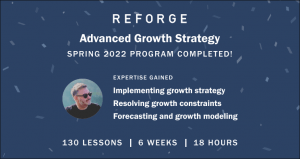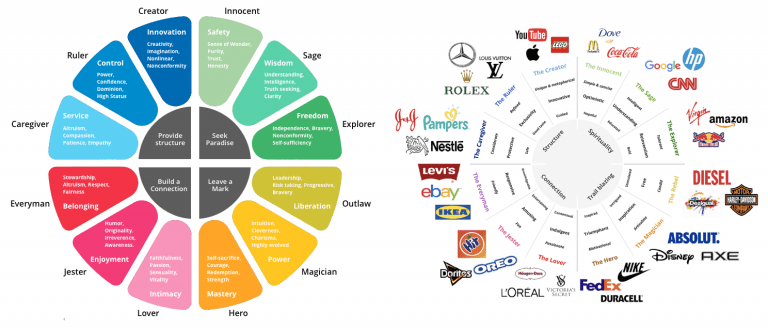With people receiving a barrage of important and junk emails every day, it is a challenge capturing their attention and encourage them to engage with your content.
How do you make sure your message stands out?
Once an email is in the inbox, the subject line is a deciding factor. A great subject line can make the difference between your email being opened, read and acted upon or being deleted without a second glance.
In this article, I will explore the importance of email subject lines and share tips for crafting subject lines that drive engagement.
KYC (Know Your Customer) To Improve Email Marketing
Knowing your customer is essential for effective email marketing. By understanding your audience’s needs, interests, and preferences, you can create more relevant and engaging email campaigns.
This requires collecting and analysing data about your customers, such as their demographics, purchase history, and online behaviour. With this information, you can create targeted and personalised email campaigns that resonate with your audience and drive results.
CRM Segmentation in Email Marketing
The impact of good CRM user base segmentation can’t be overstated. If you’re still doing ‘spray & pray’ emailing, essentially. sending emails to your entire base, you should be looking into segmentation.
Optimising your messaging on their own without having actionable segments in place will not be enough to push the needle.
Segmentation allows you to divide your audience into smaller groups based on their demographics, behaviour, and interests.
The RFM model segments your users by their engagement. RFM stands for Recency, Frequency and Monetary value and is one of several methods to help personalise comms and deliver value to your users.
By tailoring your messaging to specific segments, you can create more targeted and relevant content that resonates with your audience.
Segmentation can (should!) also affect your subject lines.
Different segments may have different pain points or interests, so it’s important to create subject lines that are relevant to them. For example, a subject line that resonates with one segment may not work for another.
By segmenting your audience and crafting subject lines that speak to their specific needs, you can increase engagement and drive results.
The Importance of Email Subject Lines
Ok, let’s dive into email subject lines!
Your email subject line is the first thing your audience sees, and it’s your first opportunity to grab their attention.
According to a study by Convince & Convert, 35% of email recipients open emails based on the subject line alone.
That means if your subject line doesn’t compel someone to open your email, it doesn’t matter how great your message is – it will never be seen.
The Anatomy of a Great Subject Line
A great subject line should be attention-grabbing, relevant, and informative. It should provide a clear and compelling reason for the reader to open your email.
To create a great subject line, keep the following elements in mind:
Length
Keep your subject line short and sweet – ideally under 50 characters. Most email clients only display the first 50-60 characters of a subject line, so make every word count.
Personalisation
Use the recipient’s name or other personal information to make the email feel more personal and relevant to them.
Power Words: Use strong, descriptive words that create excitement and urgency. Words like “urgent,” “exclusive,” and “limited time” can all be effective.
Sense of Urgency
Create a sense of urgency by using phrases like “don’t miss out” or “last chance” to encourage the recipient to take action.
Questions
Ask a question in your subject line to pique the reader’s curiosity and encourage them to open your email.
Emotion & Humour
Use emotion and humour to create a connection with the reader and make your email stand out from the rest.
Tips for Writing Compelling Subject Lines
Keep It Short and Sweet
As mentioned earlier, keeping your subject line short and sweet is crucial. In addition to making every word count, use punctuation and formatting to make your subject line visually appealing and easy to read.
Personalise the Message
Personalisation is key in email marketing. Use your CRM data to personalise your subject line with the recipient’s name, location or other relevant information. This can significantly increase the open rate and engagement.
Use Power Words
Using power words in your subject line can evoke strong emotions and encourage action. Words like “free,” “new,” and “exclusive” can all be effective in creating excitement and urgency.
Create a Sense of Urgency
Creating a sense of urgency can encourage recipients to take immediate action. Use phrases like “limited time offer,” “expires soon,” or “last chance” to create a sense of urgency.
Ask a Question
Asking a question in your subject line is a great way to pique the recipient’s interest and encourage them to open your email. The question should be relevant to your audience and related to the content of your email. By asking a question, you’re also inviting the recipient to engage with you, which can lead to a higher response rate.
Create Urgency or Scarcity
Creating a sense of urgency or scarcity in your subject line can be an effective way to get your audience to take action. By highlighting the time sensitivity or limited availability of your offer, you can motivate people to open your email and act quickly.
Use Personalisation
Personalisation is a powerful way to make your email subject lines more engaging. By using the recipient’s name or other relevant information, you can make your message feel more personalised and relevant to the individual. This can lead to higher open rates and better engagement.
Keep it Simple and Specific
In a world where people are bombarded with emails every day, it’s important to keep your subject lines simple and specific. Avoid using complicated language or overly long subject lines. Instead, focus on getting to the point and conveying the most important information in a concise and clear way.
Use Social Proof
Social proof is the idea that people are more likely to take action when they see others doing the same thing. By including social proof in your subject lines, such as mentioning the number of people who have already taken advantage of your offer, you can increase the likelihood that people will open your email and take action.
Test and Optimise
Testing and optimising your email subject lines is essential for improving your results over time. Try testing different subject lines with different segments of your audience to see what works best. You can also use data and analytics to track the performance of your subject lines and make adjustments as needed to improve your open rates and engagement.
Conclusion
Optimising email subject lines is crucial for driving engagement, moving your user further down the funnel and improving the effectiveness of your campaigns.
Keep in mind that you are not just vying for your users’ attention against your direct competitors but you are vying for the their attention and time to engage with your email against every single email in their inbox.
These include business, financial, personal, marketing, ads and plain old junk.
It requires a strategic approach that takes into account your audience and specific data points around them, the message, and a clearly defined desired outcome.
By implementing best practices discussed in this article, you can create effective subject lines that stand out and encourage your audience to open and engage.
There’s no golden bullet and constant growth testing and optimisation are key to achieving the best results and ensuring that emails continue to resonate with your audience.
Apply these tips and see your campaigns drive better results for your organisation.














